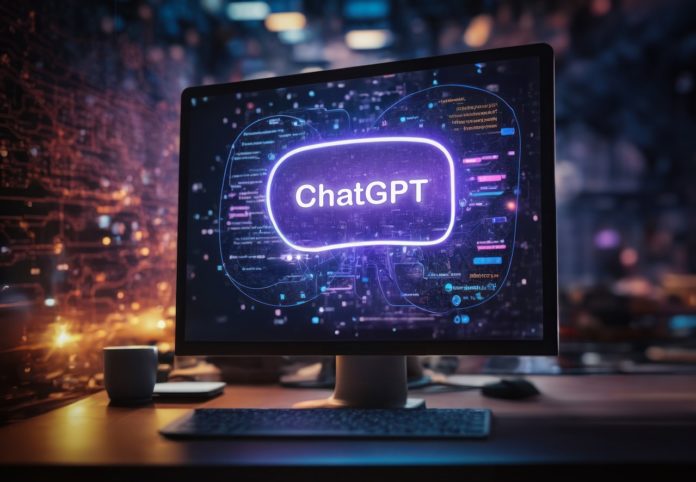Artificial Intelligence (AI) language models have come a long way, offering us fascinating possibilities for natural language processing and interactions with machines. One notable model is ChatGPT, based on the GPT-3.5 architecture developed by OpenAI. It’s pretty impressive, as it can engage in text-based conversations and generate responses that feel human-like. However, like any technology, it’s important to understand its limitations and recognize the boundaries within which it operates.
So, in this article, we’re going to dive into the limitations of ChatGPT, shedding light on the areas where it may fall short of real-world expectations. By understanding these limitations, we can get a clearer picture of what AI language models can and cannot do. It’s all about being informed and approaching them with a discerning mindset.
Now, let’s embark on this journey to uncover the limitations of ChatGPT. We’ll explore the challenges it faces and remind ourselves of the essential role humans play in harnessing the potential of AI. So, let’s get started!
Understanding ChatGPT
Alright, let’s get into the nitty-gritty of ChatGPT and how it works as an AI language model. You might be wondering what exactly is ChatGPT and how does it do what it does. Well, let’s break it down for you.
ChatGPT is an AI language model created by OpenAI. It’s built on the GPT-3.5 architecture, which stands for “Generative Pre-trained Transformer.” Fancy name, right? But what does it mean?
In simple terms, ChatGPT is trained to understand and generate human-like text based on massive amounts of data. Its training process involves two steps: pre-training and fine-tuning. During pre-training, ChatGPT learns from a wide range of internet text, absorbing the patterns and structures of language. Then comes the fine-tuning phase, where the model is trained on more specific datasets and tailored to perform particular tasks, such as engaging in chat-based conversations.
Now, let’s talk about the strengths of ChatGPT. It’s pretty impressive, to be honest. It can generate coherent and contextually relevant responses, provide information, answer questions, and even get creative by generating stories or poetry. That’s why it has found applications in various areas like customer support, content creation, and language learning.
But, as with any technology, ChatGPT has its limitations. In the next section, we’ll delve into these limitations and understand the boundaries within which it operates. So, buckle up and let’s explore the limitations of ChatGPT together!
Limitations of ChatGPT
Now, let’s dig into the limitations of ChatGPT. While it’s an impressive AI language model, it does have some boundaries that we should be aware of. Understanding these limitations will help us set realistic expectations and make informed decisions when using ChatGPT.
First off, ChatGPT lacks real-world experience and contextual understanding. It doesn’t have personal encounters or firsthand knowledge to draw from, relying solely on patterns it has learned from training data. So, it may struggle with complex or nuanced real-life situations.
Another limitation is that ChatGPT can’t generate original knowledge or information. It’s not a source of new facts or insights. Instead, it relies on the information it was trained on. So, while it can provide information from existing knowledge, it’s always a good idea to verify any claims or seek additional sources.
We should also be aware of the sensitivity of ChatGPT to input phrasing and biases. Even slight rephrasing can result in different responses, and the model may unintentionally reflect biases present in the training data. It’s important to critically evaluate the responses we receive and be mindful of potential biases.
ChatGPT is not infallible, either. It can sometimes produce incorrect or unreliable information. Due to the vastness of the internet data it was trained on, it might generate inaccurate or false information. That’s why fact-checking and verification from trusted sources are essential.
Furthermore, ChatGPT can struggle with handling nuanced or ambiguous queries. It may provide generic or irrelevant responses when faced with such queries, as it doesn’t possess the ability to grasp the subtleties or intricacies of certain topics.
Lastly, engaging in multi-turn conversations can be challenging for ChatGPT. While it can participate in back-and-forth discussions, it may have difficulties maintaining context and coherence over extended interactions. Sometimes, the responses can be inconsistent or unrelated, making sustained and meaningful conversations a bit of a challenge.
Recognizing these limitations is crucial when interacting with ChatGPT. It allows us to approach the model with a discerning mindset and use it effectively while understanding its boundaries. So, let’s keep these limitations in mind as we explore the world of ChatGPT.
Real-world Implications
Now, let’s delve into the real-world implications of ChatGPT’s limitations. While AI language models like ChatGPT offer tremendous potential, it’s essential to understand the risks and responsibilities associated with their usage.
Relying solely on AI language models for critical decision-making or as the sole source of information can be risky. As we’ve seen, ChatGPT has its limitations, such as potential inaccuracies, biases, and the inability to generate new knowledge. It’s crucial to approach its responses with a critical eye and not blindly accept them without verification.
Human verification and critical thinking play a vital role in mitigating these risks. By independently verifying information and cross-referencing multiple sources, we can ensure the accuracy and reliability of the information obtained through ChatGPT or any other AI language model.
Moreover, ethical considerations come into play when using AI language models. Responsible use entails addressing biases, promoting transparency, and being mindful of the potential impact of AI-generated content. As users, it’s important to be aware of the limitations and biases inherent in AI models and take proactive steps to minimize their negative consequences.
By being informed and responsible users of AI language models, we can navigate their limitations more effectively and make well-informed decisions. It is crucial to approach AI technology as a tool that complements human judgment and expertise rather than replacing it entirely. Through responsible and thoughtful use, we can harness the benefits of AI while mitigating its limitations and potential risks.
Mitigating Limitations
Now, let’s explore strategies for mitigating the limitations of ChatGPT and other AI language models. While these models have their boundaries, there are ways to enhance their performance and minimize their limitations.
Collaborative efforts between AI developers and researchers are key. By working together, they can address the limitations through ongoing research and development. Sharing insights and engaging in open dialogue can lead to advancements that push the boundaries of AI language models.
Improving data diversity and training methodologies is another crucial step. By incorporating a wider range of perspectives and real-world scenarios during training, AI models like ChatGPT can gain a more comprehensive understanding of language and context. This can help reduce limitations related to biases and narrow perspectives.
Leveraging external knowledge sources and implementing fact-checking mechanisms can enhance the reliability and accuracy of AI language models. By incorporating trusted sources and enabling users to verify information, we can minimize the risks of relying solely on pre-existing training data.
Incorporating user feedback is also valuable. Users can provide insights on the limitations they encounter and the areas where AI language models can be improved. Developers can use this feedback to iterate and enhance the models, leading to iterative improvements over time.
By implementing these mitigation strategies, we can work towards enhancing the capabilities and reducing the limitations of AI language models like ChatGPT. While it’s essential to recognize the boundaries of these models, proactive measures can be taken to refine their performance and make them more reliable tools for users.
User Guidelines for Interacting with ChatGPT
Now that we understand the limitations of ChatGPT, let’s discuss some guidelines to enhance our interactions with the model. These guidelines can help us make the most out of ChatGPT while being mindful of its boundaries.
- Encouraging clear and specific queries: When interacting with ChatGPT, providing clear and specific queries can lead to more accurate and relevant responses. Clearly stating what information or context you’re seeking helps the model understand your intentions better.
- Being cautious of potentially misleading or inaccurate responses: While ChatGPT aims to provide helpful responses, it’s important to remember that it relies on pre-existing training data. Exercise caution and critical thinking when receiving responses, especially when it comes to factual information. Cross-referencing with reliable sources is always a good practice.
- Recognizing limitations and seeking alternative sources when needed: It’s crucial to acknowledge the limitations of ChatGPT and not solely rely on it as the ultimate source of information. If the topic is critical or requires expertise, consider seeking information from multiple sources to gain a more comprehensive understanding.
By following these user guidelines, we can navigate the limitations of ChatGPT in a more effective and responsible manner. It allows us to leverage the model’s strengths while being aware of its boundaries and taking additional steps to ensure accuracy and reliability.
Future Directions and Advancements
The field of AI language models, including ChatGPT, is continuously evolving. Ongoing research and development are focused on addressing the limitations we’ve discussed and pushing the boundaries of what these models can achieve. Let’s take a look at some future directions and potential advancements:
- Ongoing research and development in the field: Researchers are actively exploring innovative techniques and approaches to enhance AI language models. Areas such as transfer learning, unsupervised learning, and incorporating external knowledge sources are being investigated to improve contextual understanding and generate more accurate and reliable responses.
- Promising areas for improvement and expansion: There are several exciting areas for improvement in AI language models. Advancements in handling nuanced queries, reducing biases in responses, and improving multi-turn conversation capabilities are actively pursued. These improvements can make AI language models more versatile, reliable, and better aligned with real-world requirements.
- Importance of responsible AI development and deployment: As AI language models advance, responsible development and deployment become increasingly crucial. Ethical considerations, transparency, and addressing biases in AI systems are paramount. It’s essential to ensure that AI models like ChatGPT are developed and deployed responsibly, adhering to principles that prioritize fairness, accountability, and user trust.
By looking to the future, we recognize the dynamic nature of AI language models and the potential for significant advancements. Responsible AI development, coupled with ongoing research and collaborative efforts, will shape the future of these models, making them more capable, reliable, and aligned with the needs and expectations of users and society as a whole.
Conclusion
In this exploration of ChatGPT’s limitations, we’ve gained valuable insights into the boundaries and challenges of AI language models. While ChatGPT showcases impressive capabilities, it is crucial to understand its limitations and use it responsibly to make informed decisions.
ChatGPT’s limitations include its lack of real-world experience, the inability to generate original knowledge, sensitivity to input phrasing and biases, the potential for producing incorrect information, challenges with nuanced queries, and limitations in sustained multi-turn conversations. Recognizing and navigating these limitations is essential for users engaging with ChatGPT.
Mitigating these limitations requires collaborative efforts between AI developers and researchers, improving data diversity and training methodologies, incorporating external knowledge sources, and actively integrating user feedback for iterative improvements. Responsible use of AI language models involves human verification, critical thinking, and ethical considerations.
As we look ahead, ongoing research and advancements hold promise for enhancing the capabilities and reducing the limitations of AI language models. Responsible AI development and deployment, along with user awareness, will ensure the ethical and beneficial use of these models.
By understanding the limitations and responsibly leveraging the potential of AI language models like ChatGPT, we can harness their benefits while navigating their boundaries. Let us embrace AI as a tool that complements human intellect and expertise, enabling us to make the most of this powerful technology while upholding ethical considerations and human values. Together, we can shape a future where AI and human collaboration thrive for the betterment of society.








